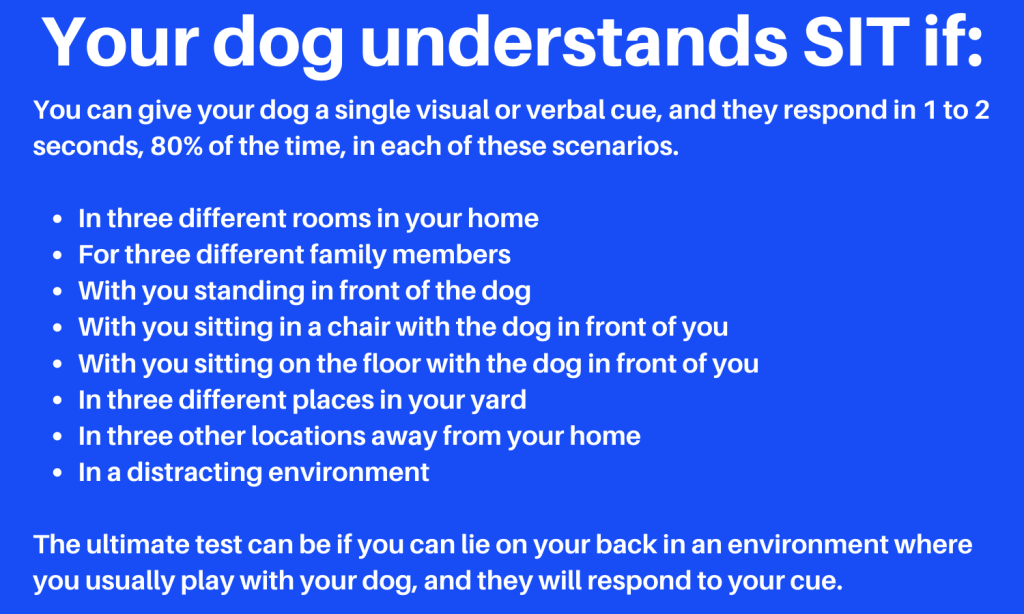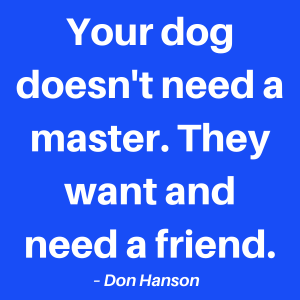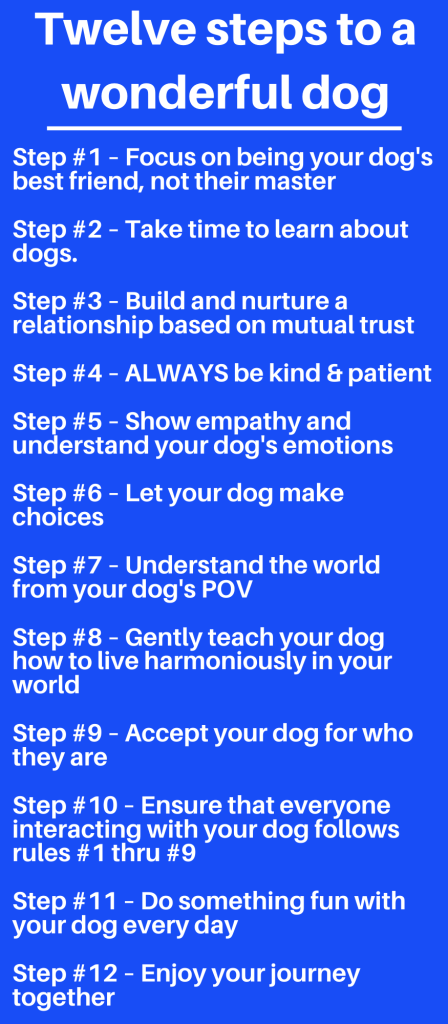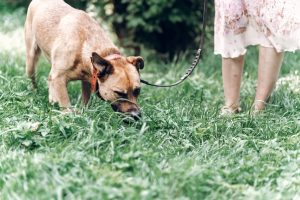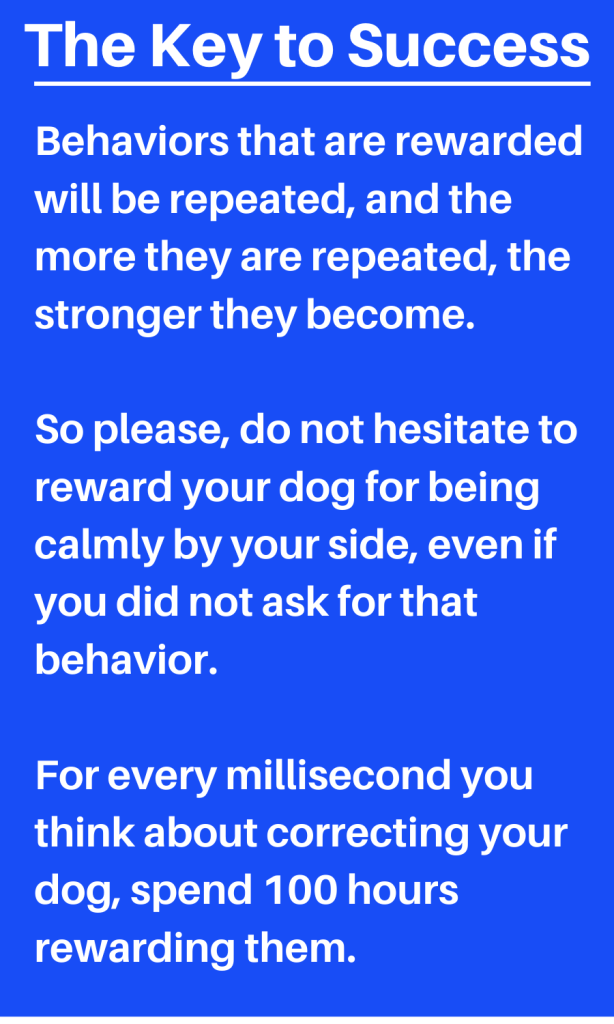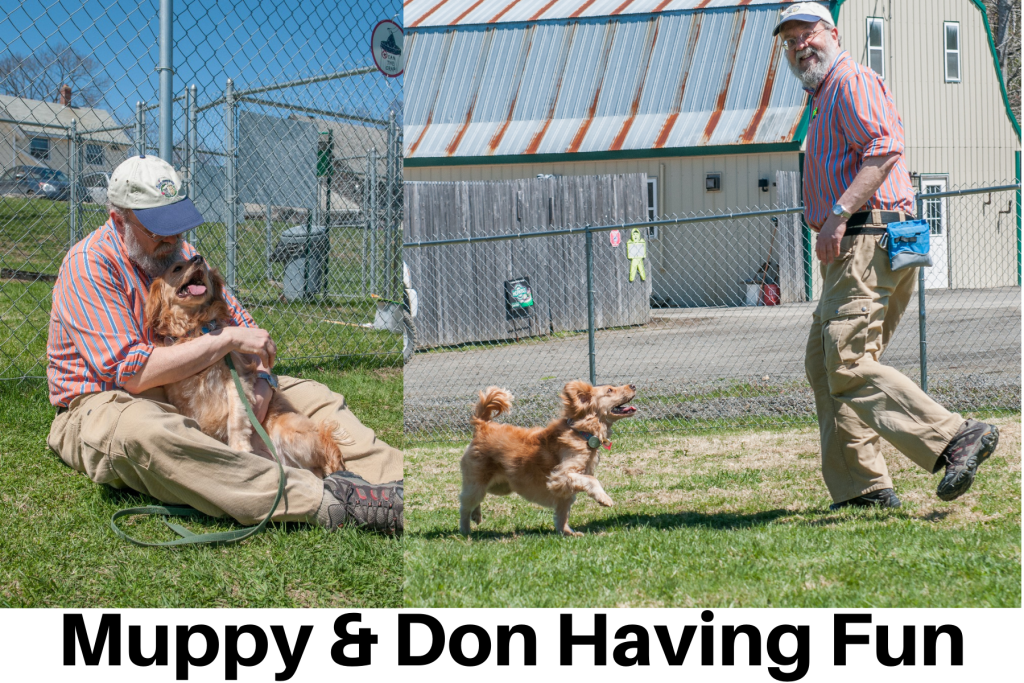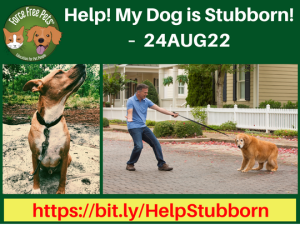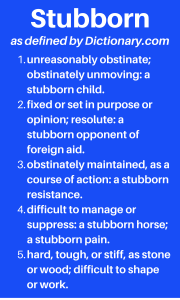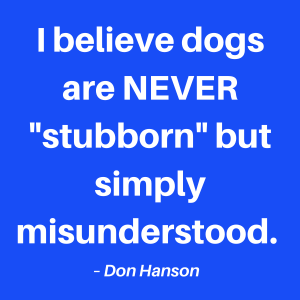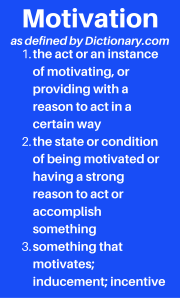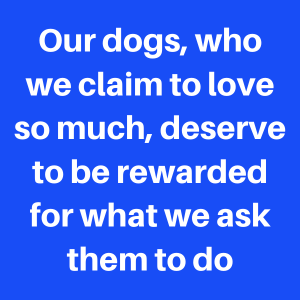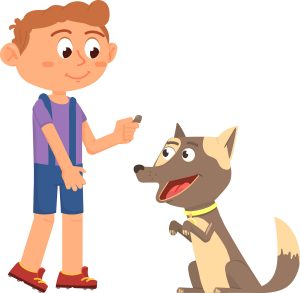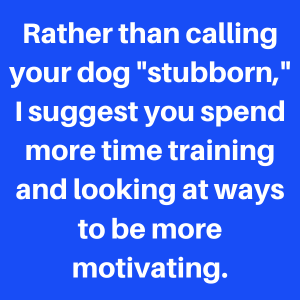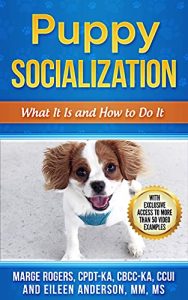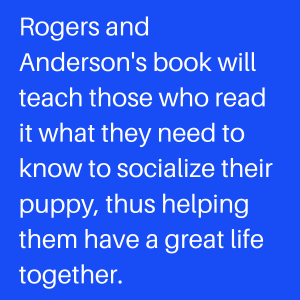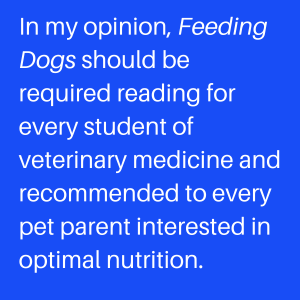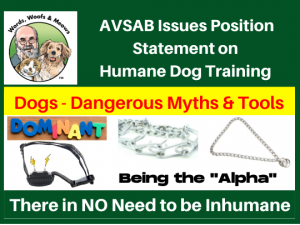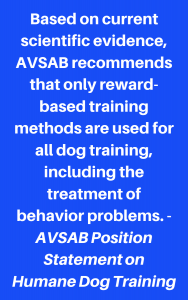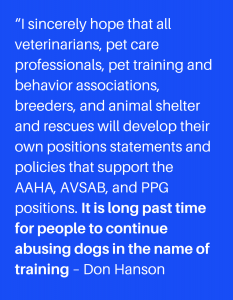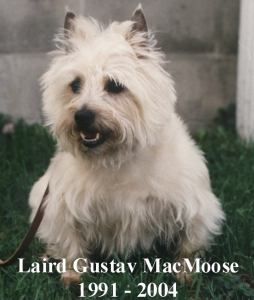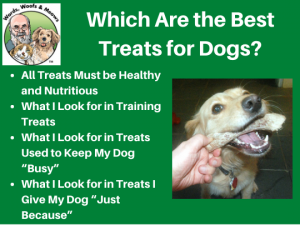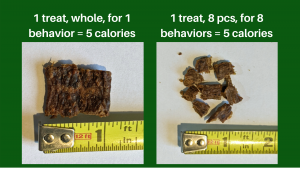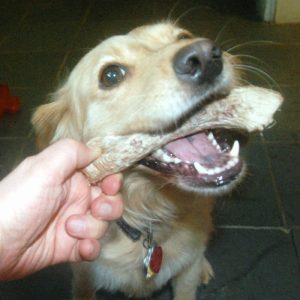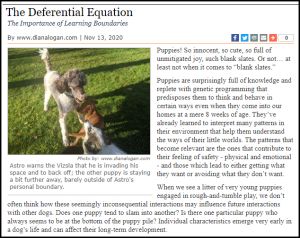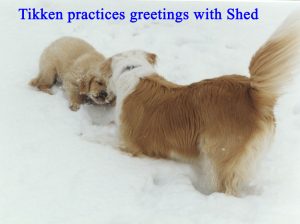< Updated 08JUN20 >
< A short link for this page – https://bit.ly/BeforeYouTrainYourDog >
Training Your Dog – Important Tips for Puppy’s
We encourage you to refrain from asking your puppy to perform behaviors during class unless you are 100% confident that your puppy will immediately and consistently respond when you give a single, visual, or verbal cue.
Some of your pups may sit immediately and consistently on a single cue, but most will not. Not responding to a single cue to sit is not a surprise to us, and it will not become a problem unless you continue repeating the cue. Every time you 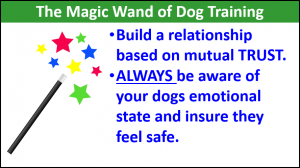 say the word “sit” again without the correct response by your dog, the cue becomes more confusing and less meaningful. Sometimes the cue becomes so useless, that we may suggest you restart training with a new word to get an immediate and consistent response. If we see or hear you repeating cues, we will point it out, as it is our goal to have your puppy respond consistently.
say the word “sit” again without the correct response by your dog, the cue becomes more confusing and less meaningful. Sometimes the cue becomes so useless, that we may suggest you restart training with a new word to get an immediate and consistent response. If we see or hear you repeating cues, we will point it out, as it is our goal to have your puppy respond consistently.
Your puppy will need to be trained in a wide variety of scenarios and environments before they reliably start to respond in new situations consistently. We cover this in more detail in Puppy Headstart lectures and in great detail in our Basic Manners orientation, the first class without your dog, and in the remaining seven sessions of Basic Manners.
We briefly discuss training your puppy in Puppy Headstart and begin with addressing how your puppy learns (see next section). However, the only typical behavior we address in Puppy Headstart is the Attention or Look behavior, 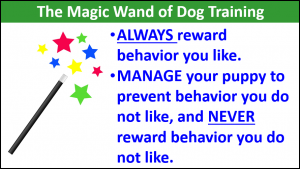 which is part of the handfeeding protocol we discuss in the week we call “Food = Power3.” We do provide information on start to teach your puppy to recall in this handout in the section entitled “STARTING TO TEACH YOUR PUPPY TO COME WHEN CALLED.” If you wish to start working on this behavior, we encourage to follow the protocol we have outlined.
which is part of the handfeeding protocol we discuss in the week we call “Food = Power3.” We do provide information on start to teach your puppy to recall in this handout in the section entitled “STARTING TO TEACH YOUR PUPPY TO COME WHEN CALLED.” If you wish to start working on this behavior, we encourage to follow the protocol we have outlined.
Listed below are some essential training tips that will help you and your puppy to be successful.
- Be patient. Training takes time, lots of rewards, and lots of repetitions. Remember how long you went to school before your parents felt you were ready for the world? Your puppy will not need to go to a school that long but plan on training your dog being a significant part of your life and theirs for the next six to eighteen months. Your dog will probably learn some things like sit and down quickly because it is something they usually do; we need to teach you how to train them to do this when presented with a cue. Other things, like coming when called and walking on a loose leash will take longer and will require more effort on your part; however, we can help you get there. If a six-year-old child can teach a 6-month old, forty-pound dog to walk on a loose leash, so can you.
The Misunderstanding of Time by Nancy Tanner – http://bit.ly/Patience-Dogs
- Focus on the relationship with your dog. If your dog does not enjoy your
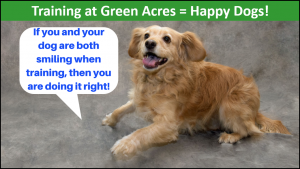 company and you do not enjoy theirs, you may not succeed. If you come home from work frustrated or angry, it is probably not a good time to try to teach your dog. Training MUST be fun for both of you if you are to be successful.
company and you do not enjoy theirs, you may not succeed. If you come home from work frustrated or angry, it is probably not a good time to try to teach your dog. Training MUST be fun for both of you if you are to be successful.
- Learn how your dog communicates and how you can best communicate with them. Dogs communicate visually with many parts of their bodies (mouth, eyes, ears, tail, body posture and look to our body language to determine what we are trying to communicate to them. Because we are primates we tend to vocalize,
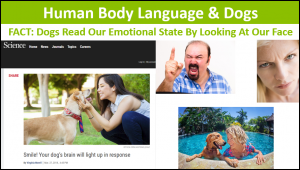 when we would be more successful using our bodies. Scientific research has demonstrated that dogs learn a great deal about us by looking at our faces. By doing so they can tell when we are safe to be around and when we are not so safe. Even subtle signs of displeasure like the woman frowning in this picture can cause a dog to believe that she is unsafe. You will not have a good relationship with your dog is they see you frowning and angry al the time. Take the time to learn how you can communicate with your dog and to understand their body language so that you can understand what they are trying to tell you.
when we would be more successful using our bodies. Scientific research has demonstrated that dogs learn a great deal about us by looking at our faces. By doing so they can tell when we are safe to be around and when we are not so safe. Even subtle signs of displeasure like the woman frowning in this picture can cause a dog to believe that she is unsafe. You will not have a good relationship with your dog is they see you frowning and angry al the time. Take the time to learn how you can communicate with your dog and to understand their body language so that you can understand what they are trying to tell you.
Introduction to Canine Communication – http://bit.ly/CanineComm
Smile! Your dog’s brain will light up in response Science, March 2018 – https://bit.ly/Dogs-HumanFaces
- Please do NOT repeat cues if your dog does not respond quickly and consistently. Your dog is not stubborn when they do not instantly respond; they do not understand the context in which you are giving the cue. If you give a cue and the dog does not perform the desired behavior, and you get frustrated, you may cause your dog to become distressed, which makes it even more difficult for them to learn. Yes, if you get frustrated, your dog knows you are no longer fun to be around. Think about a time where you were trying to master a skill, and whoever was teaching became irritated because, by their standards, you were not learning quick enough. Their attitude didn’t help you learn, did it? I recall the first time my father tried to teach me to drive a standard transmission in an old WW2 vintage Willy’s Jeep with a bad clutch. I loved my dad, but he did not set up the teaching scenario for optimal success. Trying to learn became so aversive that I questioned whether or not learning to drive a standard transmission was worth the aggravation. That is not helpful.
- Start teaching a visual cue or hand signal before using a verbal cue. We are humans and most of us like to communicate verbally. When we try to communicate with our dogs, we naturally talk. Dogs communicate visually, using all parts of their body to give various signals to others. Instead of listening to us, our dog looks at us for visual signs that indicate what we want. Therefore, dogs typically respond more readily to visual cues, which is why we teach a hand signal first. You can use anything you want as a visual cue. However, the ones we will teach you have been chosen for a reason.
Do Dogs Learn More Quickly from Verbal or Visual Signals? – Psychology Today, Oct. 16, 2018 – https://bit.ly/Cues-VisualVsBerbal-10-16-2018
- Think about what you are teaching your puppy, is it something you want them to do for the rest of their life? I often caution people about teaching their dog to “shake” or to do anything with their paws. Yes, it is a cute trick, kids love teaching it, but a puppy that has been rewarded for shake will often paw at people throughout their life in search of a reward. The same can be said for teaching “speak.” Un-training a behavior takes much longer and a great deal more of your energy than training what you want.
Canine Learning
It is essential you recognize that your puppy has been learning since the moment it was born and will continue learning for the entirety of his life. Since dogs, like humans, are always learning, it is your job to manage what they learn and to respond accordingly to their behavior. When you are not paying attention, your puppy will be learning that your shoe tastes even better than rawhide and that books and magazines make fantastic noises when they rip them apart. What is your puppy learning right now as you read this? Is it a desirable behavior?
Dogs do not learn by reading a textbook or watching a video on YouTube. Dogs learn by doing. When there is a rewarding result to a behavior, your puppy will be more likely to repeat that particular behavior in that specific context. For example, if they get a treat when they sit, dogs are very likely to sit in an attempt to earn another tasty morsel. If stealing your sock causes you to chase them, your puppy has just discovered an effective way to get your attention and to play with them. Countless puppies love the game “Chase me I have your sock!”
Always remember, dogs do what works FOR THEM; they do not perform behaviors simply because we want them to do so, nor does your puppy do things solely to please you. Sorry, that is one of the great myths about dogs. They do not and never will do things we want “just because.”
Our best strategy for teaching our puppy is to determine what our puppy likes and to use these items as rewards for behaviors we want to reoccur. Dogs do not waste energy on actions that they do not find rewarding. It is our responsibility to show them what earns rewards and what does not. Be very cautious about inadvertently training behaviors that you do not want. Always take the time to stop and ask yourself, what is my dog learning right now at this given moment in time?
If your puppy does something that you do not want, ask yourself, why is that behavior rewarding? What can I do to prevent my puppy from doing that in the future?
Happy/Not So Happy Real-Life Example
Zeus, a 14-week-old Labrador puppy, sometimes played “tag” with his guardians when they were interacting with him in the yard.
What did Zeus learn?
-
- That chasing people was fun.
- That running away from people was fun.
- That his guardians could be unpredictable, as he was never quite sure when they were playing the game, or when they were going to become frustrated with him because he tried to initiate the game by running away from them.
We humans often find chasing our dogs and having them chase us to be a great form of entertainment, but what are they learning here? The game of tag can have some pros and cons. When we are having our puppies chase us, they are learning to play a game of staying with us and keeping us in sight at all times, particularly if we dart behind trees and couches. However, the flip side of this is that when we chase our dog, they are learning to run away from us and not to let us catch them. When push comes to shove, unless your dog is ill or overweight or you are an incredible sprinter, you will never successfully catch your dog if he or she is running away from you.
If you wish to play tag with your puppy, we recommend that you do so with the following rules:
- You are ALWAYS the one being pursued.
- Allow your puppy to catch you, and each time he does so, give him a high-value food reward and then run away again, repeating this process.
- Before you begin the game give it a verbal cue, such as “Catch Me” and when it is time to end the game, allow your puppy to catch you one final time, give a couple of great treats and give an all done cue, such as “That Will Do.” (This will help to prevent him from chasing those joggers at 6 AM.)
- Always end the game before your puppy is ready to finish so that you can help him remain interested in the game and not become bored with it.
That Dominance and Alpha Stuff
By now, it is possible that someone has told you that you need to worry about your puppy becoming dominant or that you need to be the “Alpha.” The best advi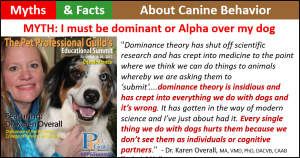 ce we can give you is – forget about it. The whole idea of “dominance,” “pack hierarchy,” and “the alpha dog” is a concept that came about through poor scientific research. If you talk to a wolf biologist or well-educated pet care professional, they will tell you that wolf packs are more like a well-adjusted family than a tyrannical “kill or be killed” dictatorship.
ce we can give you is – forget about it. The whole idea of “dominance,” “pack hierarchy,” and “the alpha dog” is a concept that came about through poor scientific research. If you talk to a wolf biologist or well-educated pet care professional, they will tell you that wolf packs are more like a well-adjusted family than a tyrannical “kill or be killed” dictatorship.
Moreover, while the dog and wolf may be closely related species, they are separated by several thousands of years of evolution. Behaviorally the domestic dog is not even considered to be a pack animal. We explain this topic in more depth in the orientation session for our Basic Manners class, but if you want more information now, check out these articles on our website and the many resources they suggest.
Things I Wish I Had Known Before I Started Training Dogs – Gus, the Dominance Myth, An Alpha Roll, and a Damaged Relationship –http://bit.ly/Things-Gus-Dominance
Dominance: Reality or Myth – http://bit.ly/Dominance-RealityorMyth
Position Statement on the Use of Dominance and Punishment for the Training and Behavior Modification of Dogs – http://bit.ly/GAKS-Pos-NoPain-NoForceNoFear
How did wolves become dogs? (from NY Times Science OCT 2017 ) – http://bit.ly/Wlf2DogVideo
Excerpt from the documentary Dogs, Cats and Scapegoats The Mind of Cesar Millan” – http://bit.ly/dodoDW-Holly
A Quick Note About Punishment and Aversives
Punishing a puppy can have some dangerous pitfalls, and we highly encourage you to avoid this. When we apply punishment in an attempt to extinguish a behavior, we may unintentionally make the behavior worse and harder to 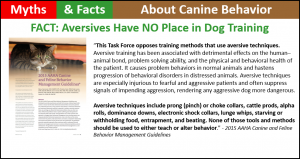 change. We never know how a dog will associate punishment. It can very easily and quickly damage your relationship with your puppy. Punishment causes fear and stress, which impairs your dog’s ability to learn. We have found that people often resort to punishing their dog more as an expression of frustration than as a learning tool. Raising a puppy will probably be frustrating. Your willingness to accept that and learning to deal with it without responding aversively is critical to developing a strong and life-long bond with your puppy.
change. We never know how a dog will associate punishment. It can very easily and quickly damage your relationship with your puppy. Punishment causes fear and stress, which impairs your dog’s ability to learn. We have found that people often resort to punishing their dog more as an expression of frustration than as a learning tool. Raising a puppy will probably be frustrating. Your willingness to accept that and learning to deal with it without responding aversively is critical to developing a strong and life-long bond with your puppy.
Most of the behaviors that we humans list as being “problem” behaviors are typical canine behaviors and not issues for our dogs. For example, dogs have to urinate and defecate – it is humans that have the problem with the locations our puppy may choose to defecate or urinate. As the species with more gray matter, we challenge you to create an environment of success and to reframe your “problem” behaviors. Ask yourself, what do I want my puppy to learn, and how can I teach this behavior? How can I manage my puppy and his environment to prevent him from being rewarded for actions I do not want?
Not So Happy Real-Life Example
Moxie, a mixed-breed puppy, who was often left alone for extended periods, was kicked by her male owner for urinating and defecating in the house.
What did Moxie learn?
-
-
- To fear men.
- To NEVER eliminate in the presence of a human being.
- To immediately consume her feces to hide it.
- To continue to urinate and defecate in the house (she was rarely allowed to eliminate outdoors, and each time that Moxie did defecate or urinate inside, she was immediately rewarded because she felt better).
Moxie learned the above in 8 weeks. It took three years for Moxie to become comfortable urinating or defecating while on a 6-foot leash. It took one year of daily work to habituate Moxie to men (she always remained aloof. However, her fear dissipated). This dog never learned not immediately to attempt to consume her feces – it had become a fixed action pattern. She did learn to leave her feces on cue, but her first instinct was always to consume it until the day she passed away at the age of 14. Moxie was a real dog, and this story is true.
What Do Pet Care Professionals Say About the Use of Aversives?
The American Animal Hospital Association (AAHA), the American Veterinary Society of Animal Behavior (AVSAB), and the Pet Professional Guild (PPG) recommend that aversives NEVER be used.
We explain this topic in more depth in the orientation session for our Basic Manners class, but if you want more information now, check out these articles on our website and the many resources they suggest.
Things I Wish I Had Known Before I Selected My First Dog – Aversives are Unnecessary and Counter-Productive When Training A Dog – Part 1 – http://bit.ly/Things-Aversives-1
Things I Wish I Had Known Before I Selected My First Dog – Aversives are Unnecessary and Counter-Productive When Training A Dog – Part 2 – http://bit.ly/Things-Aversives-2
Reward Based Training versus Aversives – http://bit.ly/RewardVSAversive
What’s Shocking about Shock – What Science Tells Us About the Use of Shock in Dog Training – Green Acres Kennel Shop Blog – http://bit.ly/ShockBARK-JUL2019
Podcast – What’s Shocking About Shock – What Science Tells Us About the Use of Shock in Dog Training – http://bit.ly/WfMw-WhatShock-27JUL19
The Unintended Consequences of Shock Collars – http://bit.ly/ShockCollars
Podcast – The Unintended Consequences of Shock Collars – http://bit.ly/ShockPodcast
Food, Play, and Praise as Rewards
Our training philosophy at Green Acres can be summed up as “Manage your puppy to prevent undesirable behaviors and always reward the behaviors you like.” In most cases, the best reward for a puppy or an adult dog is going to be a tasty 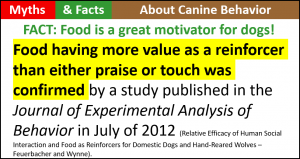 treat or some fun, interactive play. Many of the outdated training books of the 1970’s promoted a philosophy that stated dogs should do everything we want just for our praise, and that they should never be given food as a reward. I wonder if those authors would have accepted “Fantastic Book” instead of payment in cold hard cash? I sincerely doubt it, just as I know that very few people would work solely for praise. Dogs are like every other animal on this planet; they do something because there is something in it for them. Food is often the most powerful “something” for rewarding our dog for desired behavior, so we encourage you to use it and to use it well!
treat or some fun, interactive play. Many of the outdated training books of the 1970’s promoted a philosophy that stated dogs should do everything we want just for our praise, and that they should never be given food as a reward. I wonder if those authors would have accepted “Fantastic Book” instead of payment in cold hard cash? I sincerely doubt it, just as I know that very few people would work solely for praise. Dogs are like every other animal on this planet; they do something because there is something in it for them. Food is often the most powerful “something” for rewarding our dog for desired behavior, so we encourage you to use it and to use it well!
Study Confirms That Food Is A Better Reinforcer Than Praise or Touch
Food has more value as a reinforcer than either praise or touch was confirmed by a study published in the Journal of Experimental Analysis of Behavior in July of 2012 (Relative Efficacy of Human Social Interaction and Food as Reinforcers for Domestic Dogs and Hand-Reared Wolves – Feuerbacher and Wynne). The following is from the conclusions of the study – https://bit.ly/FoodAsReward-Wynne-2012
Our goal was to identify the reinforcers that maintain social behavior between dogs and humans. We hypothesized that social interaction might function as a reinforcer that could maintain dogs’ social interactions with humans. Although there were some individual differences, our results suggest that social interaction did not reinforce canid behavior as well as did food. If social interaction functions as a reinforcer, it may do so only under specific conditions not explored in the present experiments. The greater efficacy of food as a reinforcer parallels the evolutionary origins of dogs as scavengers of human refuse (Coppinger & Coppinger, 2001) and supports the use of food as a reinforcer for training. The present findings might provide empirical evidence for trainers to give clients who object to using food to train canid behavior (e.g. Donaldson, 1996). [ Emphasis Added ]
A Word on Dog Parks
We do not recommend taking your puppy to a dog park. While dog parks usually have rules, there is seldom someone present to enforce those rules. As a result, there may be dogs at the dog park that are not adequately vaccinated, that carry harmful parasites, or that are aggressive to other animals. Any of those things can put the physical health of your puppy at risk. Aggression and inappropriate play may also place your puppy’s mental and emotional health at risk. For more information on dog parks and making sure an experience at the dog park is a good one, we suggest you read Don’s article at – http://bit.ly/BeforeYouVisitTheDogPark
Management
Management is about taking the necessary steps to ensure that your puppy is not placed in to a situation where he may have the opportunity to behave in an undesirable manner. In its purest form, management translates to: If you do not want your puppy chewing on your new shoes, then do not leave your puppy unsupervised and a room where your shoes in the middle of the floor.
The primary reason people have problems with housetraining and destructive chewing of personal items is poor management. Appropriate management is one of the most overlooked training tools and is essential to responsible canine guardianship. When your puppy is managed correctly, you will have the time to develop the right relationship with him/her and your dog will get the training it needs. Many of the behavior problems clients call us about are management problems due to inadequate supervision or unrealistic expectations of a young dog.
All puppies have a minimum of two trainers: 1) their guardian and 2) their environment. While you may spend a significant amount of time training your puppy, even you need to eat, sleep, and take mental breaks. However, the environment never needs time off and is available to train 24 hours a day, seven days a week. If you do not initially manage your puppy’s interaction with its environment, they may quickly learn things you do not want them to learn. While providing this management may seem extremely time-consuming, when done right, it pays off handsomely.
When a puppy is loose in the home, they require constant supervision. Constant supervision means that a responsible person is devoting all of their attention and energy to watching and managing the puppy so that they can intervene before something undesirable happens. You cannot provide a puppy with adequate supervision while reading the paper, watching TV, doing homework, preparing a meal, or talking on the phone. Remember, we have brought this species into our home and expect them to live by rules that make absolutely NO SENSE to them. A puppy has no concept of valuables and as such does not get why chewing up your grandchild’s doll is an issue. It is our responsibility to properly manage our puppy to prevent unwanted behavior while also training them and rewarding them for desired behavior.
Proper management and training requires a plan to be established as to what your options are when you cannot supervise your puppy. Crates, pens, and tethers make ideal management tools. Always have treats and chews handy so that when you have to place your puppy into its crate or pen suddenly you have a reward ready to go. Additionally, tethering a puppy can be useful, providing you remain in the room and can give partial supervision and reward good behavior. (Note: A puppy on a tether should NEVER be left unattended!)
A puppy or even an adult dog will always be like a young child. They can be trained, but training does not happen overnight or even in a month. Nor can you train your dog for all possible contingencies. Until your dog is trained, it is your responsibility to make plans so he/she can succeed.
Happy Real-Life Example:
Susan was playing with Fido, her 14-week old Lab puppy, when the phone rang in the kitchen. Susan immediately got up and placed Fido in his crate with a treat and a special chew toy located on the shelf by the crate and then proceeded to answer the phone.
What did Fido learn?
-
- Going into his crate gets rewarded
- Chewing on a special toy is fun
- Interruption in play gets rewarded
- Spending time alone for a few minutes is okay (providing Susan does not let Fido out if he is barking)
- No inappropriate behaviors were practiced such as eliminating in the house or destructive chewing
Not So Happy Real-Life Example
Sally was playing with Rex, her 12-week old Golden puppy, when the phone rang in the kitchen. Sally immediately got up to answer the phone, leaving Rex alone in the living room. While Sally was in the kitchen, Rex urinated on the carpet, tasted the coffee table, and chased the cat. Rex then proceeded to go into the kitchen and bark at Sally until she hung up the phone.
What did Rex learn?
-
- Urinating on the living room carpet is rewarding (he immediately felt better)
- Humans are great because they even have sticks indoors to chew on
- Cats are lots of fun; they run fast when you chase them
- The best way to get humans attention is to bark at them.
- Sometimes Sally gets mad for no apparent reason (Rex has no idea that Sally’s anger is associated with his urinating on the carpet or the puddle of urine in the room)
- Sally can be unpredictable, sometimes she is nice and sometimes she is scary.
The material presented above will be discussed over the next four weeks. If you have any questions or concerns, please be sure to bring them to the attention of your instructor, so that we can help you to plan for success.
________________________________________________________________________
Don Hanson is the co-owner of the Green Acres Kennel Shop ( greenacreskennel.com ) in Bangor, ME where he has been helping people with their pets since 1995. He is a Bach Foundation Registered Animal Practitioner (BFRAP), Certified Dog Behavior Consultant (CDBC), Associate Certified Cat Behavior Consultant (ACCBC) and a Certified Professional Dog Trainer (CPDT-KA). Don is a member of the Pet Professional Guild (PPG) and is committed to PPG’s Guiding Principles and the Pain-Free, Force-Free, and Fear-Free training, management, and care of all pets. Don produces and co-hosts a weekly radio show and podcast, The Woof Meow Show, that airs on Z62 Retro Radio WZON (AM620) and WKIT 103.3-HD3 and is streamed at http://bit.ly/AM620-WZON every Saturday at 9 AM. Podcasts of the show are available at http://bit.ly/WfMwPodcasts/, the Apple Podcast app, and at Don’s blog: www.words-woofs-meows.com. The opinions in this post are those of Don Hanson.
©08JUN20, Donald J. Hanson, All Rights Reserved
< Click for Copyright and Use Policy >
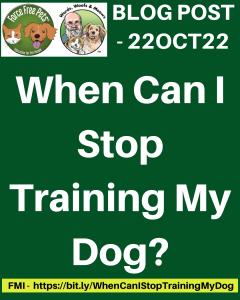 < A version of this article was published in Pets and Their People on June 28, 2022 >
< A version of this article was published in Pets and Their People on June 28, 2022 >
 done right, training will be fun and will make your bond even stronger. That doesn’t mean you must be enrolled in a dog training class. A well-designed dog training program will leave you with the skills and knowledge you need to continue working with your dog long after completing the class; however, if you attend a class so that you can both learn something new, why not! For example, Muppy and I recently attended a new class ForceFreePets is offering called The Joy of Sniffing. We had a blast! We both learned new skills, but, more importantly, we had fun doing something together. We’re using what we learned several times per week
done right, training will be fun and will make your bond even stronger. That doesn’t mean you must be enrolled in a dog training class. A well-designed dog training program will leave you with the skills and knowledge you need to continue working with your dog long after completing the class; however, if you attend a class so that you can both learn something new, why not! For example, Muppy and I recently attended a new class ForceFreePets is offering called The Joy of Sniffing. We had a blast! We both learned new skills, but, more importantly, we had fun doing something together. We’re using what we learned several times per week
 online educational resource for people with dogs and cats. He is a Professional Canine Behavior Consultant (PCBC-A) accredited by the Pet Professional Accreditation Board (PPAB) and a Bach Foundation Registered Animal Practitioner (BFRAP). Don is a member of the Pet Professional Guild (PPG), serving on the Board of Directors and Steering Committee and chairing the Advocacy Division. He is also a founding director of Pet Advocacy International (PIAI). In addition, Don produces and co-hosts The Woof Meow Show podcast, available at http://bit.ly/WfMwPodcasts/, the Apple Podcast app, and Don’s blog: www.words-woofs-meows.com. The opinions in this article are those of Don Hanson.
online educational resource for people with dogs and cats. He is a Professional Canine Behavior Consultant (PCBC-A) accredited by the Pet Professional Accreditation Board (PPAB) and a Bach Foundation Registered Animal Practitioner (BFRAP). Don is a member of the Pet Professional Guild (PPG), serving on the Board of Directors and Steering Committee and chairing the Advocacy Division. He is also a founding director of Pet Advocacy International (PIAI). In addition, Don produces and co-hosts The Woof Meow Show podcast, available at http://bit.ly/WfMwPodcasts/, the Apple Podcast app, and Don’s blog: www.words-woofs-meows.com. The opinions in this article are those of Don Hanson.